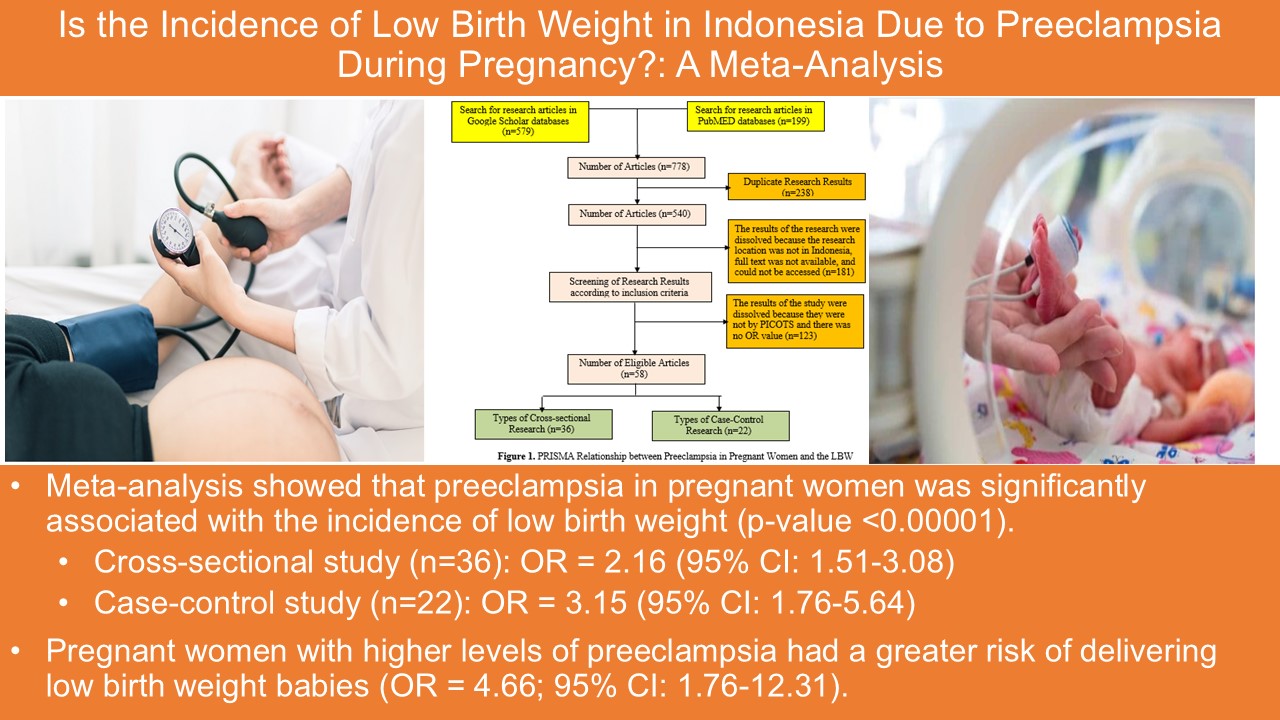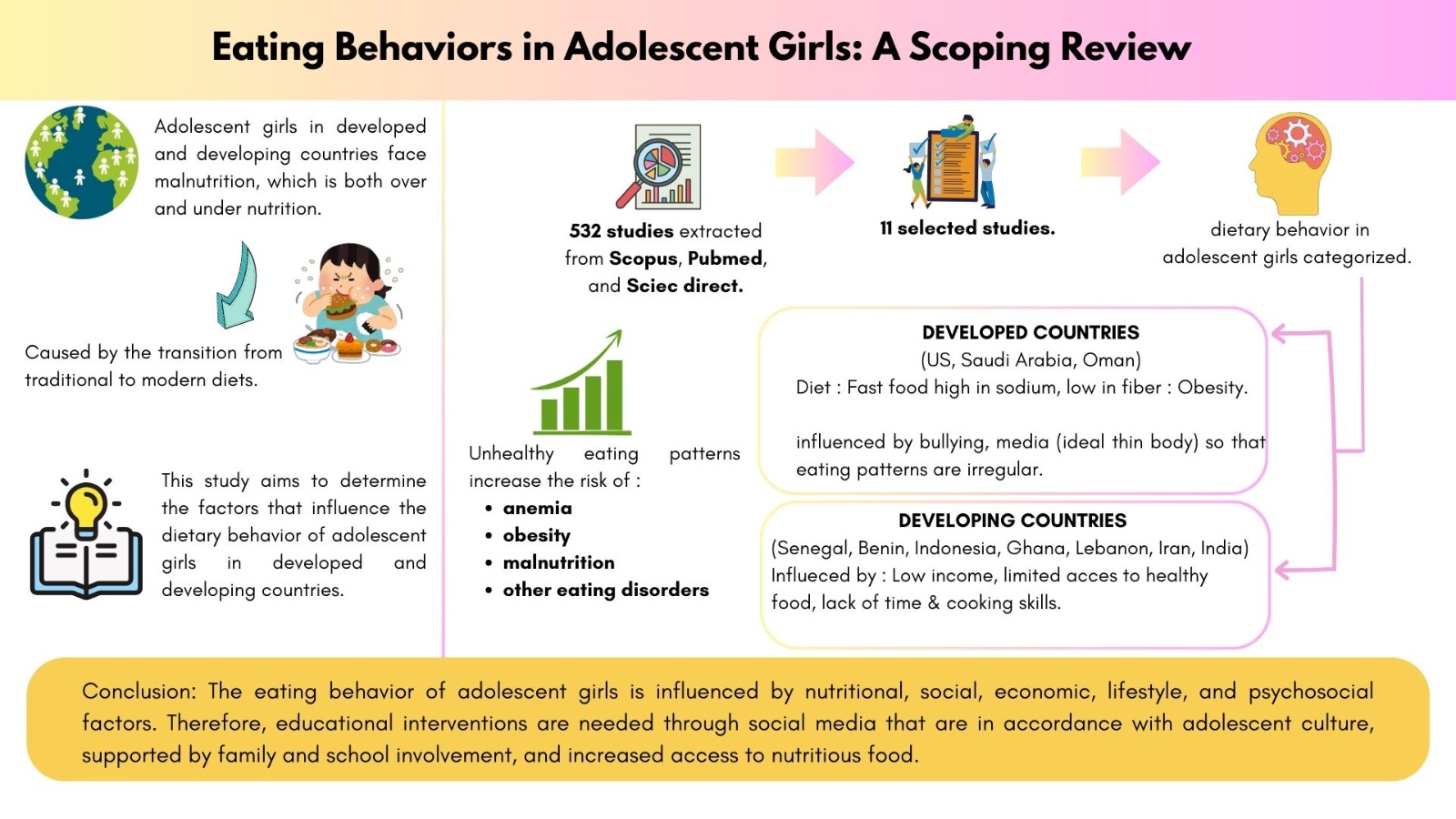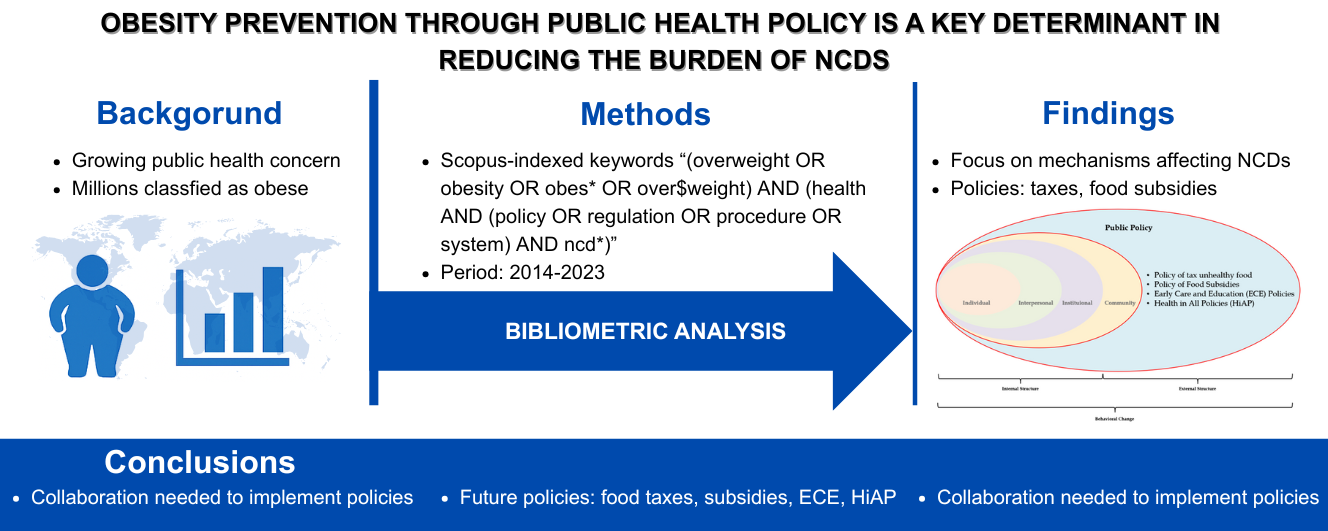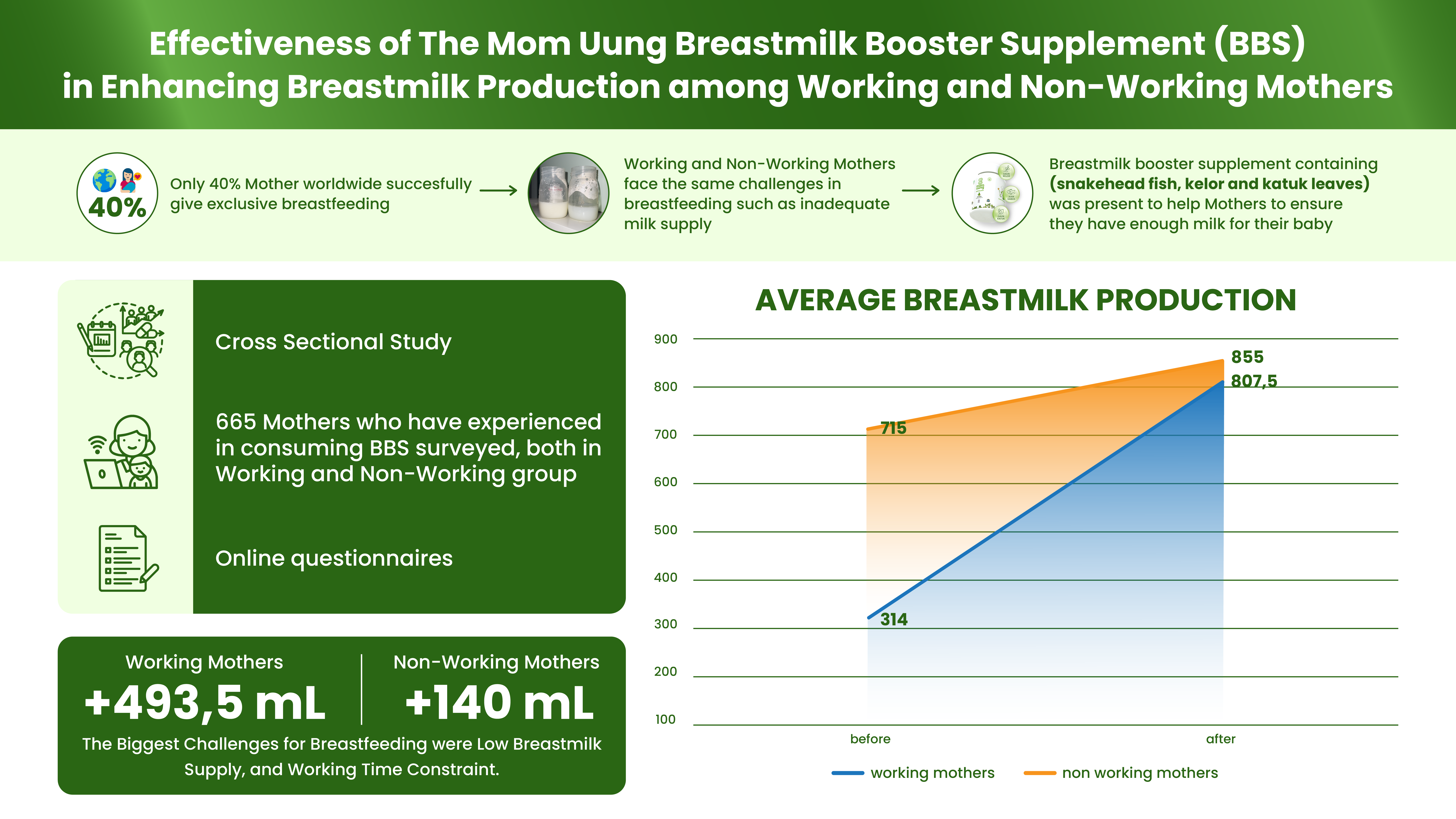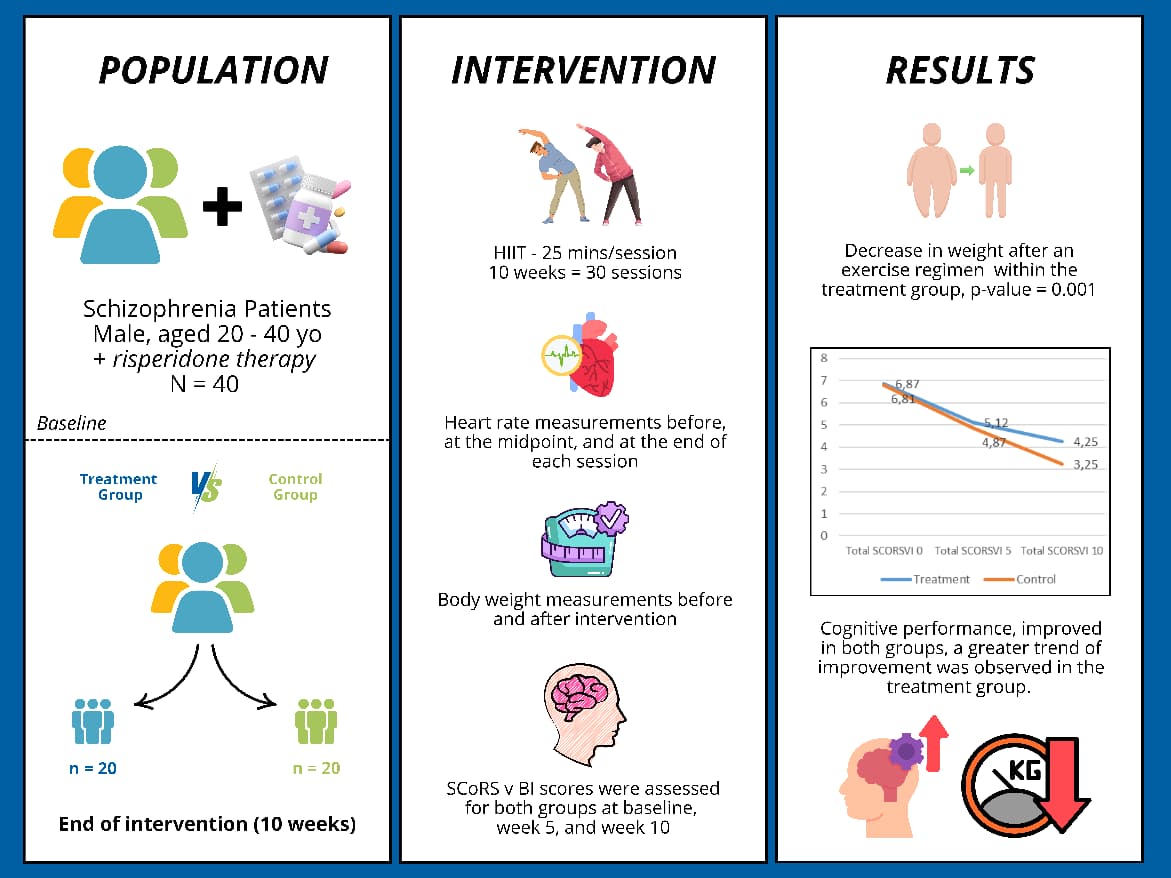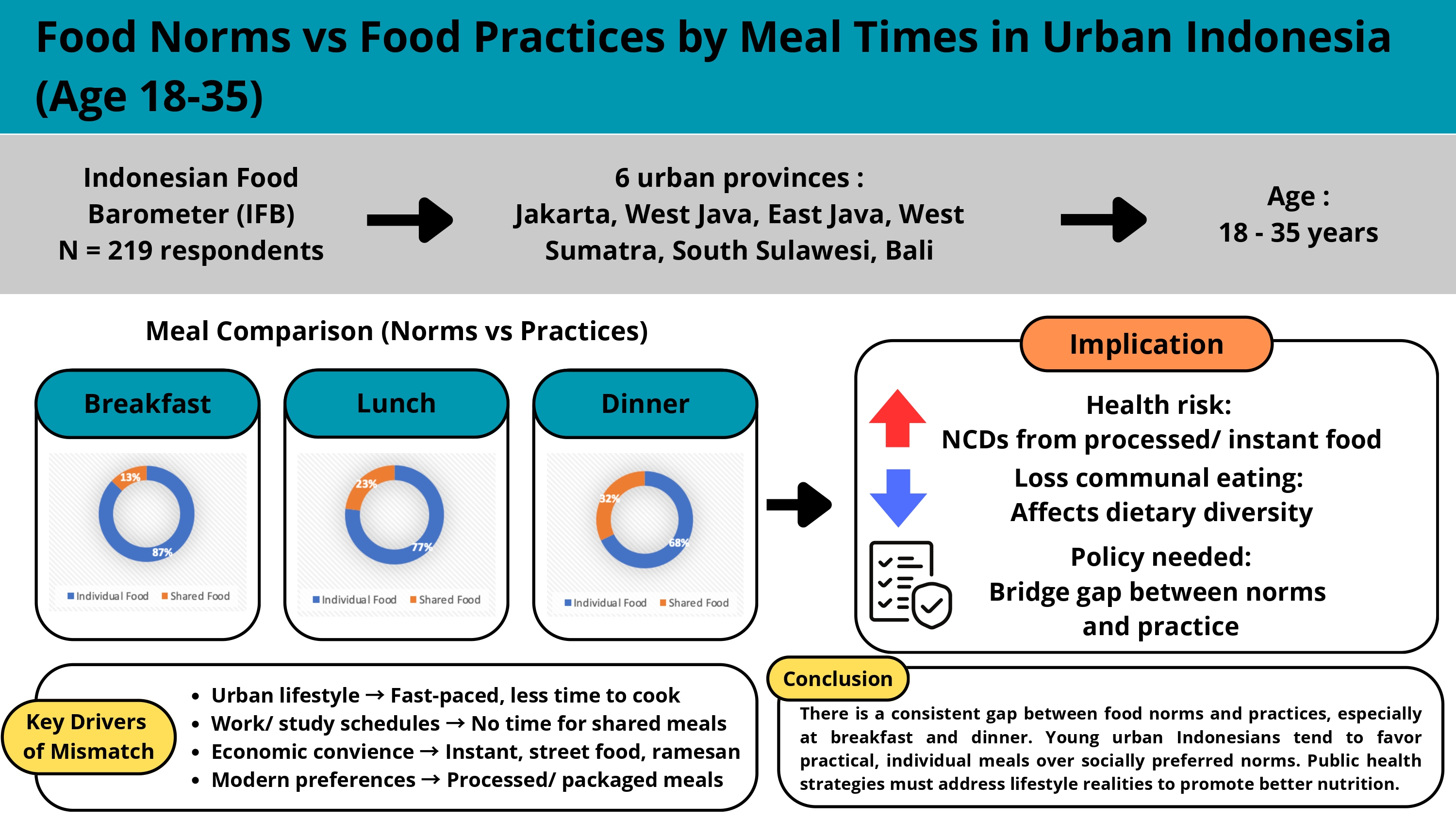Nutraceutical Potential of Encapsulated Purple Okra (Abelmoschus Esculentus L. Moench) Extract
Downloads
The accumulation of free radical production impacts on the development of degenerative diseases which are the highest cause of morbidity and mortality in the world. Biofortification of purple okra in the form of encapsulated extract has the potential as a nutraceutical through the role of antioxidants. This study aimed to analyze the potential of encapsulated purple okra extract as a nutraceutical by determining physical-chemical characteristics, microbial and heavy metals contamination, antioxidant capacity, total flavonoids, and quercetin. This was a laboratory experimental study on purple okra which was extracted using the maceration method. The results of physical-chemical characteristics showed that purple okra extract has the form of dry powder, greenish-brown color, odor characteristic of okra extract (caramel-like), and sour taste with yield of 4%, pH of 4.8, undetectable solvent residue, water content of 13.5%, total ash content of 10.4%, and disintegration time of 1.25 minutes. The results of microbial contamination showed a total plate count of 3.1 102 CFU g⻹, yeast and mold count, E. coli, S. aureus negative CFU g⻹, and Salmonella spp negative CFU 10g⻹. The results of heavy metal contamination showed that As, Pb, Cd, and Hg were not detected every mg Kg⻹. The results of antioxidant capacity, total flavonoids, and suspected quercetin derivatives showed a value of 84.88%, 81.32 mg QE g⻹, and 4.91 mg g⻹. These bioactive components act as free radical scavengers in helping to prevent chain reactions. Encapsulated purple okra extract has shown its potential as a nutraceutical that helps prevent degenerative diseases.
Achmad, A.B. (2022). Uji sitotoksik in vitro ekstrak etanol buah okra merah (Abelmoschus esculentus) pada sel hela. Journal of Applied Veterinary Science and Technology, 3(1), 22-26. doi: 10.20473/javest.V3.I1.2022.22-26
Acquavia, M.A., Pascale, R., Pappalardo, I., Santarsiero, A., Martelli, G., et al. (2021). Characterization of quercetin derivatives in crossing combination of habanero white and Capsicum annuum peppers and of anti-inflammatory and cytotoxic activity. Separations, 8(90), 1-12. doi: 10.3390/separations8070090
Anjani, P.P. (2018). Potensi antidiabetes ekstrak okra ungu (Abelmoschus esculentus L.) pada tikus model diabetes yang diinduksi streptozotocin (Unpublished master's thesis). Institut Pertanian Bogor, Bogor
Anjani, P.P., Damayanthi, E., Rimbawan, & Handharyani, E. (2018). Potential of okra (Abelmoschus esculentus L.) extract to reduce blood glucose and malondialdehyde (mda) liver in streptozotocin-induced diabetic rats. Jurnal Gizi dan Pangan, 13(1), 47-54. doi: 10.25182/jgp.2018.13.1.47-54
[AOAC] Association of Official Analytical Chemists. (2011). AOAC official method 2011.14: calcium, copper, iron, magnesium, manganese, potassium, phosphorus, sodium, and zinc in fortified food products. microwave digestion and inductively coupled plasma-optical emission spectrometry. Gaithersburg: AOAC International
AOAC. (2013). AOAC official method 2013.06: arsenic, cadmium, mercury, and lead in foods. Gaithersburg: AOAC International
AOAC. (2014). AOAC official method 2011.19: chromium, selenium, and, molybdenum in infant formula and adult nutritional products inductively coupled plasma-mass spectrometry. Gaithersburg: AOAC International
AOAC. (2015). AOAC official method 2015.01: heavy metals in food. Gaithersburg: AOAC International
Awoke, J.N., Orji, O.U., Aja, P.M., Ezeani, N.N., Aloke, C., et al. (2020). Ethanol leaf extract of Ruspolia hypocrateriformis abrogated hepatic redox imbalance and oxidative damage induced by heavy metal toxicity in rats. Arabian Journal of Chemistry, 13(11), 8133-8145. doi: 10.1016/j.arabjc.2020.09.045
Balentine, D.A., Dwywer, J.T., Erdman, J.W., Ferruzzi, M.G., Gaine, P.C., et al. (2015). Recommendations on reporting requirements for flavonoids in research. The American Journal of Clinical Nutrition, 101(6), 1113–1125. doi: 10.3945/ajcn.113.071274
Banjarnahor, S.D.S., & Artanti, N. (2014). Antioxidant properties of flavonoids. Medical Journal of Indonesia, 23(4), 239-244. doi: 10.13181/mji.v23i4.1015
Bawa, S.H., & Badrie, N. (2016). Nutrient profile, bioactive components, and functional properties of okra (Abelmoschus esculentus (L.) Moench). US: Academic Press.
[BPOM] Badan Pengawas Obat dan Makanan. (2019). Peraturan badan pengawas obat dan makanan nomor 17 tahun 2019 tentang persyaratan mutu suplemen kesehatan. Jakarta: BPOM
[BSN] Badan Standardisasi Nasional. (1992a). SNI 01-2891-1992: SNI cara uji makanan dan minuman butir 5.1. Jakarta: BSN
BSN. (1992b). SNI 01-2891-1992: SNI cara uji makanan dan minuman butir 6.1. Jakarta: BSN
BSN. (2015). SNI ISO 4833-1: Mikrobiologi rantai pangan-metode horizontal untuk enumerasi mikroorganisme. Jakarta: BSN
BSN. (2016). SNI ISO 16649-2: Metode horizontal enumerasi íŸ-glucuronidase-escherichia coli positif. Bagian 2: teknik penghitungan koloni pada suhu 44 °c dan 5-bromo-chloro-4-chloro-3-indolyl íŸ-d-glucuronide. Jakarta: BSN
Burgos-Morón, E., Abad-Jiménez, Z., de Marañón, A.M., Iannantuoni, F., Escribano-López, et al. (2019). Relationship between oxidative stress, er stress, and inflammation in type 2 diabetes: The battle continues. Journal of Clinical Medicine, 8(9), 2-22. doi: 10.3390/jcm8091385
Chaemsawang, W., Prasongchean, W., Papadopoulos, K.I., Ritthidej, G., & Sukrong, S., et al. (2019). The effect of okra (Abelmoschus esculentus (L.) Moench) seed extract on human cancer cell lines delivered in its native form and loaded in polymeric micelles. International Journal of Biomaterials, 2019(9404383), 1-13. doi: 10.1155/2019/9404383
Chandra, P.P.B., Laksmitawati, D.R., & Rahmat, D. (2022). Skrining fitokimia dan penetapan kadar flavonoid total ekstrak buah okra (Abelmoschus esculentus L.). Jurnal Kefarmasian Akfarindo, 7(2), 80-87. doi: 10.37089/jofar.vi0.149
Creed, J.T., Brockhoff, C.A., Martin, T.D. (1994). Method 200.8: determination of trace elements in waters and wastes by inductively coupled plasma-mass spectrometry. Cincinnati: US Environmental Protection Agency
Demirci, N. (2017). Protective effect of prolonged quercetin supplement on oxidative stress and antioxidant enzyme activities in boxers. Studies on Ethno-Medicine, 11(2), 168-173. doi: 10.1080/09735070.2017.1305225
[Depkes] Departemen Kesehatan. (2000). Parameter standar umum ekstrak tumbuhan obat. Jakarta: Departemen Kesehatan
Depkes. (2008). Farmakope herbal indonesia. (Ed ke-1). Jakarta: Departemen Kesehatan
El-Masry, H.M.A., & Mahmoud, A.A.H. (2021). Free radicals and antioxidants in diseased neonates. Annals of Neonatology Journal, 3(1), 8-23. doi: 10.21608/ANJ.2020.131987
Elkhalifa, A.E.O., Alshammari, E., Adnan, M., Alcantara, J.C., Awadelkareem, A.M., et al. (2021). Okra (Abelmoschus esculentus) as a potential dietary medicine with nutraceutical importance for sustainable health applications. Molecules, 26(696), 1-21. doi: 10.3390/molecules26030696
Faisal, H., & Handayani, S. (2019). Comparison of antioxidant activity of ethanol extract of fruit and okra leaves (Abelmoschus esculentus L. Moench) by dpph and abts methods. Indonesian Journal of Pharmaceutical and Clinical Research, 2(2), 6-13. doi: 10.32734/idjpcr.v2i2.2815
Fan, S., Zhang, Y., Sun, Q., Yu, L., Li, M., et al. (2014). Extract of okra lowers blood glucose and serum lipids in high-fat diet-induced obese c57bl/6 mice. The Journal of Nutritional Biochemistry. 25(7):702-709. doi: 10.1016/j.jnutbio.2014.02.010
Fathinatullabibah, Kawiji, & Khasanah LU. (2014). Stabilitas antosianin ekstrak daun jati (Tectona grandis) terhadap perlakuan ph dan suhu. Jurnal Aplikasi Teknologi Pangan, 3(2), 60-63
Fauza, A., Djamiatun, K., & Al-Baarri, A.N. (2019). Studi karakteristik dan uji aktivitas antioksidan dari tepung buah okra (Abelmoschus esculentus). Jurnal Aplikasi Teknologi Pangan, 8(4), 137-139. doi:10.17728/jatp.4449
Gomez, M.R., Cerutti, S., Sombra, L.L., Silva, M.F., & Martínez, L.D. (2007). Determination of heavy metals for the quality control in Argentinian herbal medicines by etaas and icp-oes. Food and Chemical Toxicology, 45(6), 1060-1064. doi: 10.1016/j.fct.2006.12.013
Hidayati, D.N., Sumiarsih, C., & Mahmudah, U. (2018). Standarisasi non spesifik ekstrak etanol daun dan kulit batang berenuk (Crescentia cujete Linn). Jurnal Ilmiah Cendikia Eksakta. 3(1):19-23. doi: 10.3194/ce.v3i1.2139
Hurrle, S., & Hsu, W.H. (2017). The etiology of oxidative stress in insulin resistance. Biomedical Journal, 40(5), 257-262. doi: 10.1016/j.bj.2017.06.007
[Kemenkes] Kementerian Kesehatan. (2020). Farmakope indonesia (Ed ke-6). Jakarta: Kementerian Kesehatan RI
Khan, S., Rafi, Z., Baker, A., Shoaib, A., & Alkhathami, A.G. (2022). Phytochemical screening, nutritional value, anti-diabetic, anti-cancer, and anti-bacterial assessment of aqueous extract from Abelmoschus esculentus pods. Processes, 10(2), 1-19. doi: 10.3390/pr10020183
Khirzin, M.H., Ton, S., & Fatkhurrohman. (2019). Ekstraksi dan karakterisasi gelatin tulang itik menggunakan metode ekstraksi asam. Jurnal Sain Peternakan Indonesia, 14(2), 119-127. doi: 10.31186/jspi.id.14.2.119-127
Molyneux, P. (2004). The use of the stable free radical diphenylpicrylhydrazyl (DPPH) for estimating antioxidant activity. Songklanakarin Journal Science Technology, 26(2), 211-219
Moussa, Z., Judeh, Z.M.A., & Ahmed, S,A. (2019). Nonenzymatic exogenous and endogenous antioxidants. London: IntechOpen
Nabila, M., Damayanthi, E., & Marliyati, S.A. (2018). Extracts of okra (Abelmoschus esculentus L.) improves dyslipidemia by ameliorating lipid profile while not affecting hs-crp levels in streptozotocin-induced rats. IOP Conference Series: Earth and Environmental Science, 196(012039), 1-5. doi: 10.1088/1755-1315/196/1/012039
Nining, Suwandi, S.N., & Wikarsa, S. (2017). Pengeringan ekstrak bunga rosela (Hibiscus sabdariffa L.) melalui mikroenkapsulasi metode semprot kering dengan maltodekstrin. Farmasains, 4(2), 27-34. doi: 10.22236/farmasains.v4i2.234
Padmawati, I.A.G., Suter, I.K., & Arihantana, N.M.I.H. (2020). Pengaruh jenis pelarut terhadap aktivitas antioksidan ekstrak eceng padi (Monochoria vaginalis Burm F. C. Presel.). Jurnal Ilmu dan Teknologi Pangan, 9(1), 81-87. doi: 10.24843/itepa.2020.v09.i01.p10
Panche, A.N., Diwan, A.D., & Chandra, S.R. (2016). Flavonoids: an overview. Journal of Nutritional Science, 5(470), 1-15. doi: :10.1017/jns.2016.41
Pascal, A.D.C., Marcelline, G., Joundekon, B.A.P., Reine, B.G.S., & Worou, C.N. (2018). Chemical composition, antioxidant activity and nutritional potential of two species of okra: Abelmoschus caillei and Abemonchus moschatus. Journal of Scientific and Engineering Research, 5(6), 240-248
Pramudya, M., Dewi, F.R.P., Wong, R.W., Anggraini, D.W., Winarni, D., et al. (2022). Anti-cancer activity of an ethanolic extract of red okra pods (Abelmoschus esculentus L. Moench) in rats induced by N-methyl-N-nitrosourea. Veterinary World, 15(5), 1177-1184. doi: 10.14202/vetworld.2022.1177-1184
Procházková, D., BouÅ¡ová, I., & Wilhelmová, N. (2011). Antioxidant and prooxidant properties of flavonoids. Fitoterapia, 82(4), 513-523. doi: 10.1016/j.fitote.2011.01.018
Ramesh, S., & Kosalram, K. 2023. The burden of non-communicable diseases: A scoping review focus on the context of India. Journal of Education and Health Promotion, 12(41), 1-7. doi: 10.4103/jehp.jehp_1113_22
Rifkowaty, E.E., & Wardanu, A.P. (2016). Pengaruh ekstraksi cara basah dan cara kering terhadap aktivitas antioksidan ekstrak cengkodok (Melastoma malabathricum L.). Jurnal Aplikasi Teknologi Pangan, 5(1), 10-15. doi: 10.17728/jatp.v5i1.33
Sachdeva, M., Karan, M., Singh, T., & Dhingra, S. (2014). Oxidants and antioxidants in complementary and alternative medicine: a review. Spatula, 4(1), 1-16. doi: 10.5455/spatula.20140131074751
Salsabila, D.M., Alifiani, N., Islam, N., Febriana, S., & Nisa, T.C. (2022). Aktivitas antioksidan dan total flavonoid es krim naga merah dan lidah buaya sebagai nonfarmakoterapi dmt2. Jurnal Teknologi Pangan dan Kesehatan, 4(1), 1-10. doi: 10.36441/jtepakes.v4i1.827
Seo, E., Lim, S., Yun, C.I., Shin, J.W., & Kim, Y.J. (2021). Validation and measurement uncertainty of hplc-uv method for quercetin quantification in various foods. Korean Journal of Food Science and Technology, 53(6), 682-687. doi: 10.9721/KJFST.2021.53.6.682
Sharifi-Rad, M., Kumar, N.V.A., Zucca, P., Varoni, E.M., Dini, L., et al. (2020). Lifestyle, oxidative stress, and antioxidants: Back and forth in the pathophysiology of chronic diseases. Frontiers in Physiology, 11(694), 1-21. doi: 10.3389/fphys.2020.00694
Siddiqui, R.A., & Moghadasian, M.H. (2020). Nutraceuticals and nutrition supplements: challenges and opportunities. Nutrients, 12(1593), 1-4. doi: 10.3390/nu12061593
Sugiyanto, K.C., Palupi, D.A., & Adyastutik, Y. (2017). Evaluasi hasil keseragaman ukuran, keregasan dan waktu hancur tablet salut film neuralgad produksi lafi ditkesad Bandung. Cendekia Journal of Pharmacy, 1(1), 34-90. doi: 10.31596/cjp.v1i1.5
Suhendra, C.P., Widarta, I.W.R., & Wiadnyani, A.A.I.S. (2019). Pengaruh konsentrasi etanol terhadap aktivitas antioksidan ekstrak rimpang ilalang (Imperata cylindrica (L) Beauv.) pada ekstraksi menggunakan gelombang ultrasonic. Jurnal Ilmu dan Teknologi Pangan, 8(1), 27-35. doi: 10.24843/itepa.2019.v08.i01.p04
Suwaris, I., & Saputra, S.A. (2020). Evaluasi mutu obat tradisional kapsul buah mengkudu (Morindae citrifoliae Fructus). Jurnal Sintesis, 1(1), 16-21
Syakdani, A., Purnamasari, I., & Necessary, E. (2019). Prototipe alat evaporator vakum (efektivitas temperatur dan waktu evaporasi terhadap tekanan vakum dan laju evaporasi pada pembuatan sirup buah mengkudu (Morinda citrifolia L.)). Jurnal Kinetika, 10(2), 29-35
Syam, A.K, Riyanti, S., & Armypa, U.W. (2019). Kadar flavonoid dan polifenol buah okra merah dan okra hijau (Abelmoschus esculentus (L.) Moench). SNIFA. 4, 5-8.
Syukri, Y., Purwati, R., Hazami, N., Tahmid, H.A., & Fitria, A. (2020). Standardization of specific and non-specific parameters of propolis extract as raw material for herbal product. EKSAKTA, 1(1), 36-43. doi: 10.20885/EKSAKTA.voll.iss1.art6
[USP] United States Pharmacopeia. (2020a). United states pharmacopeia and national formulary. Rockville: USP Convention
USP. (2020b). USP 43 NF 38: Microbiological examination of nonsterile products microbial enumeration tests. Rockville: USP Convention
USP. (2020c). USP 43 NF 38: Microbial procedures for absence of specified microorganisms”nutritional and dietary supplements. Rockville: USP Convention
USP. (2020d) USP 43 NF 38: Microbial enumeration tests”nutritional and dietary supplements. Rockville: USP Convention
Utami, R.P. (2018). Kandungan gizi, total fenol, kuersetin, dan kapasitas antioksidan total pada berbagai proses pemasakan okra (Abelmoschus esculentus L.) (Unpublished master's thesis). Institut Pertanian Bogor, Bogor
Wahyuningsih, S.P.A., Fachrisa, A., Nisa, N., Kusuma, B.W.A., Shoukat, N., et al. (2021a). Potential of red okra extract (Abelmoschus esculentus L. Moench) to restore kidney damage due to sodium nitrite. Biosaintifika, 13(1), 84-91. doi: 10.1155/2021/6647800
Wahyuningsih, S.P.A., Mwendolwa, A., Winarni, D., Anggreini, R.W., & Mamuaya, B.K.K. (2021b). Protective effect of red okra (Abelmoschus esculentus (L.) Moench) pods against sodium nitrite-induced liver injury in mice. Veterinary Medicine International, 2021(1), 1-11. doi: 10.1155/2021/6647800
Widodo, S., Yusa, N.M., & Ina, P.T. (2021). Pengaruh waktu maserasi terhadap aktivitas antioksidan ekstrak daun mundu (Garcinia dulcis (Roxb.) Kurz). Jurnal Ilmu dan Teknologi Pangan, 10(1), 14-23. doi: 10.24843/itepa.2021.v10.i01.p02
Wijianto, B., Nurhidayah, A.L., & Luliana, S. (2022). Standardization of secondary metabolites and heavy metal contamination assay on onchidiid slug (Onchidium typhae) in West Kalimantan waters. Jurnal Farmasi Sains dan Praktis, 8(3), 199-206. doi: 10.31603/pharmacy.v8i3.7296
Vernanda, R.Y., Puspitasari, M.R., & Satya, H.N. (2019). Standarisasi spesifik dan non spesifik simplisia dan ekstrak etanol bawang putih tunggal terfermentasi (Allium sativum Linn.). Jurnal Farmasi Sains dan Terapan, 6(2), 74-83. doi:10.33508/jfst.v6i2.2234
Xu, D., Hu, M., Wang, Y., & Cui, Y. (2019). Antioxidant activities of quercetin and its complexes for medicinal application. Molecules, 24(6), 1-15. doi: 10.3390/molecules24061123
Yang, D., Wang, T., Long, M., & Li, P. (2020). Quercetin: its main pharmacological activity and potential application in clinical medicine. Hindawi, 2020(8825387), 1-13. doi: 10.1155/2020/8825387
Yang, P., Xu, F., Li, H.F., Wang, Y., Li, F.C., et al. (2016). Detection of 191 taxifolin metabolites and their distribution in rats using hplc-esi-it-tof-msn. Molecules, 21(1209), 1-26. doi: 10.3390/molecules21091209
Yunanto, A., Setiawan, B., & Suhartono, E. (2009). Peran radikal bebas. Banjarmasin: Penerbit Pustaka Banua
Zainuddin, A., Sabilu, Y., Majid, R., Pratiwi, A.D., & Jafriati. (2022). Analysis of phytochemical compounds, total phenolic content, and antioxidant activity test of ethanol extract of okra (Abelmoschus esculentus L.) from the traditional market of Kendari. Journal of Hunan University Natural Sciences, 49(7), 89-95. doi: 10.55463/issn.1674-2974.49.7

This work is licensed under a Creative Commons Attribution-NonCommercial-ShareAlike 4.0 International License.
- MEDIA GIZI INDONESIA Journal is the copyright owner of all materials published on this website.
- The formal legal provisions for access to digital articles of this electronic journal are subject to the terms of the Creative Commons Attribution-NonCommercial-ShareAlike license (CC BY-NC-SA 4.0), which means that MEDIA GIZI INDONESIA Journal and readers reserve the right to save, transmit media / format, manage in database, maintain, and publish articles as long as it continues to include the name of the Author.
- Printed and published print and electronic manuscripts are open access for educational, research and library purposes. In addition to these objectives, the editorial board shall not be liable for violations of copyright law.


2.png)















